Lempire: $150M helping B2B professionals grow their businesses
In just five years, Lempire has bootstrapped its way to $20M ARR and a $150M valuation.
Guillaume Moubeche, aka “G”, built Lempire by nailing the basics and focusing on providing as much value as possible to its customers.
Making it a great example of how prioritizing your customers is the quickest way to success.

G and the team at Lempire are on a mission to help 1,000,000 entrepreneurs build profitable businesses.
Their goal now is to reach $100M ARR and become valued at over $1B. But as always, this isn’t about what’s to come.
This is the story of how Lempire went from Zero to One. 🚀
Business model: How Lempire makes money
Lempire is a colletion of SaaS (Software as a Service) products to help B2B professionals grow themselves and their businesses.
Lempire’s revenue is largely driven by monthly (or annual) subscriptions to their products - along with a few enterprise customers. Their current products include:
Lemlist. A sales prospecting automation tool that helps you reach inboxes, get replies, and grow your business. Their most famous and most successful product.
Lemwarm. Email deliverability booster tool, keeping your cold emails out of the dreaded spam folder. Super well integrated into Lemlist.
Lemcal. A feature-rich Calendly alternative with options for peronalization. Again, well integrated with Lemlist.
Taplio (acquired). LinkedIn growth and conversion tool.
TweetHunter (acquired). AI-powered Twitter growth tool.
Previous products:
Lempod (now sold): LinkedIn automation tool to boost engagement.
Lemtalk (inactive): Live website customer support chat run through your Slack.
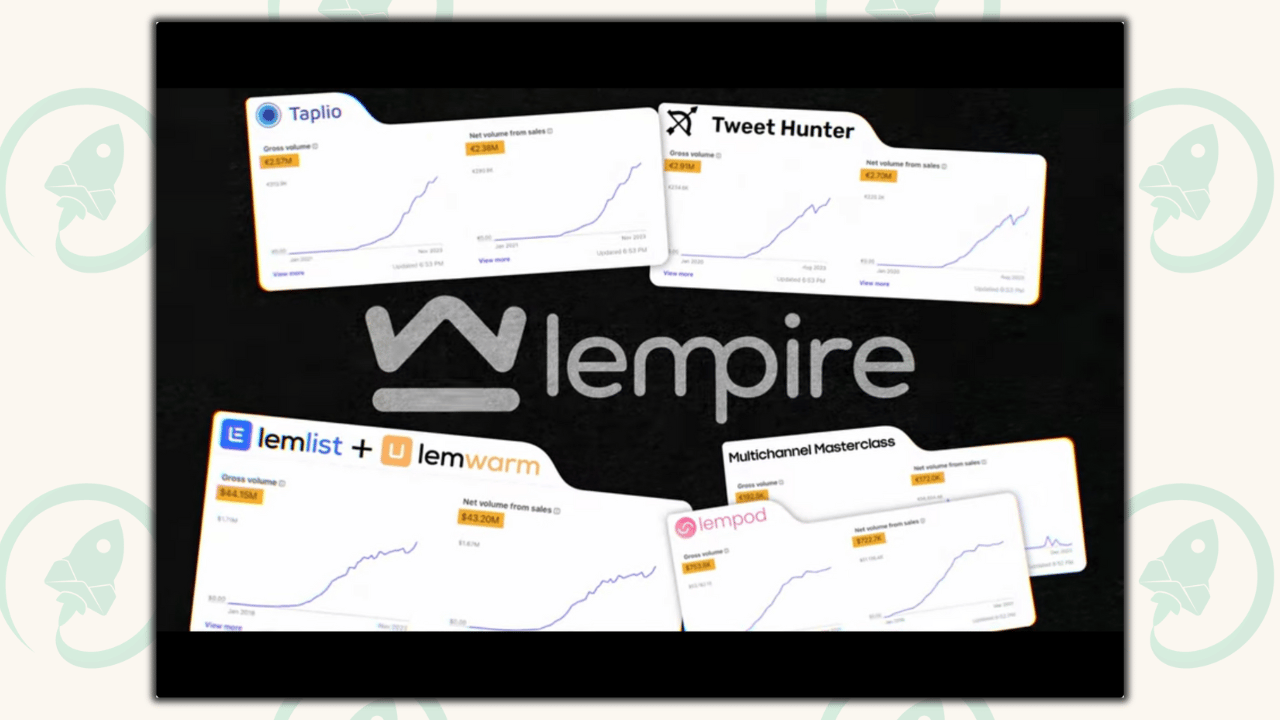
Lempire’s first, and still core product is Lemlist.
Before their acquisitions of Taplio and TweetHunter, Lemlist accounted for ~72% of their ARR (because of the integrations between products, it’s almost impossible to get to an exact figure).
Lempire’s Growth
Lempire’s first product, Lemlist launched in 2018 by G and his two technical Co-Founders, Vianney and Francois. They were going to bootstrap this with just $1,000.
To do so, they needed to validate their idea as soon as possible. So four months later they had the product built and had their first customer.
They were launching in a crowded market. So they knew it would be tough. But it also meant they didn’t need to prove PMF (Product-Market Fit). They just had to be better than everyone else. Simple right?
They first launched on Product Hunt and ended as the #1 product of the day.
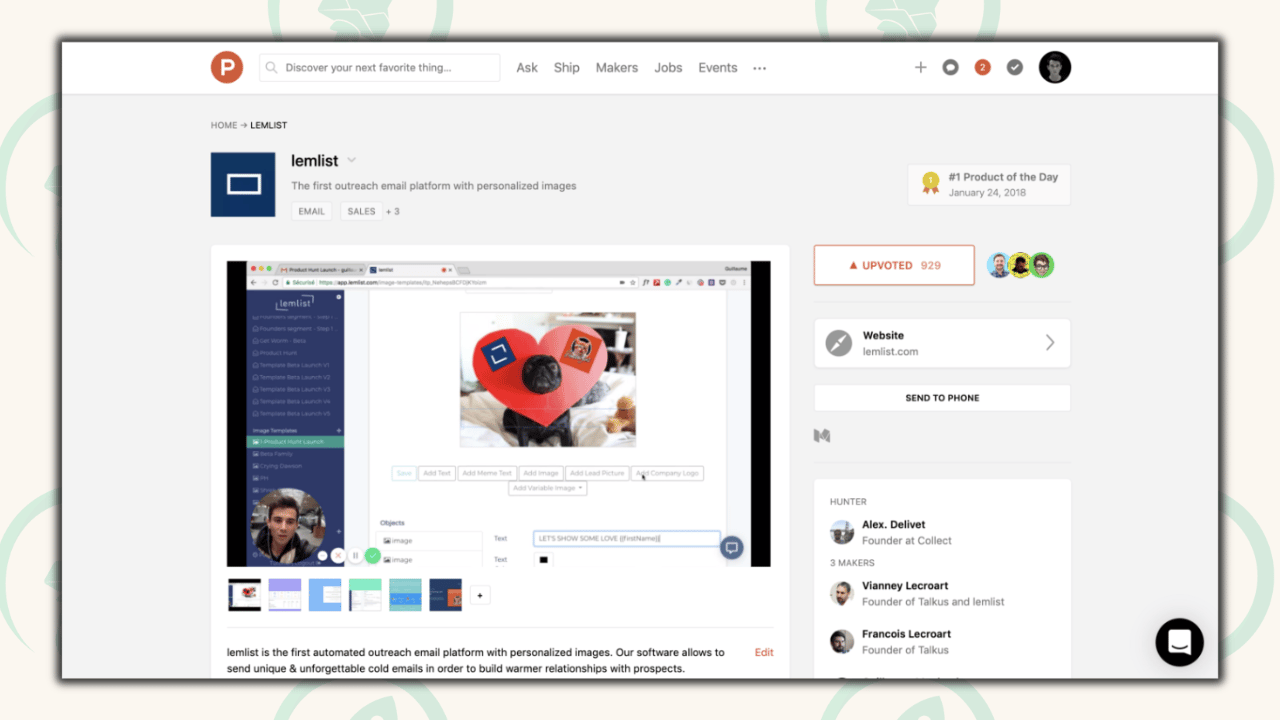
A huge number of users followed. But all in a free beta test.
Once they received enough feedback from their beta. They launched an iterated Lemlist on AppSumo (a software platform that gives lifetime deals).
They made $160k in two week.
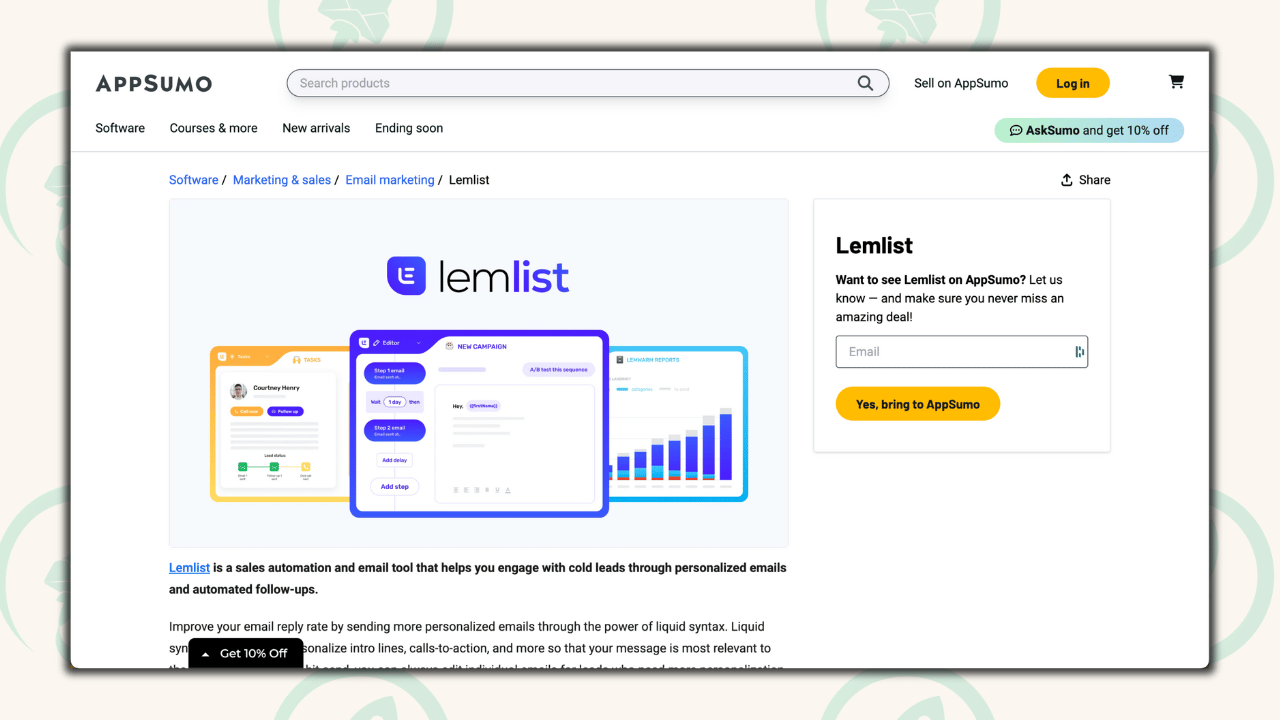
Well actually they only ended up with ~$50k. AppSumo took the rest. But that didn’t matter. They now had enough proof to go all in.
And just eight months later were at $250k ARR (not including enterprise customers) with no signs of slowing down, growing at 34.81% MoM.
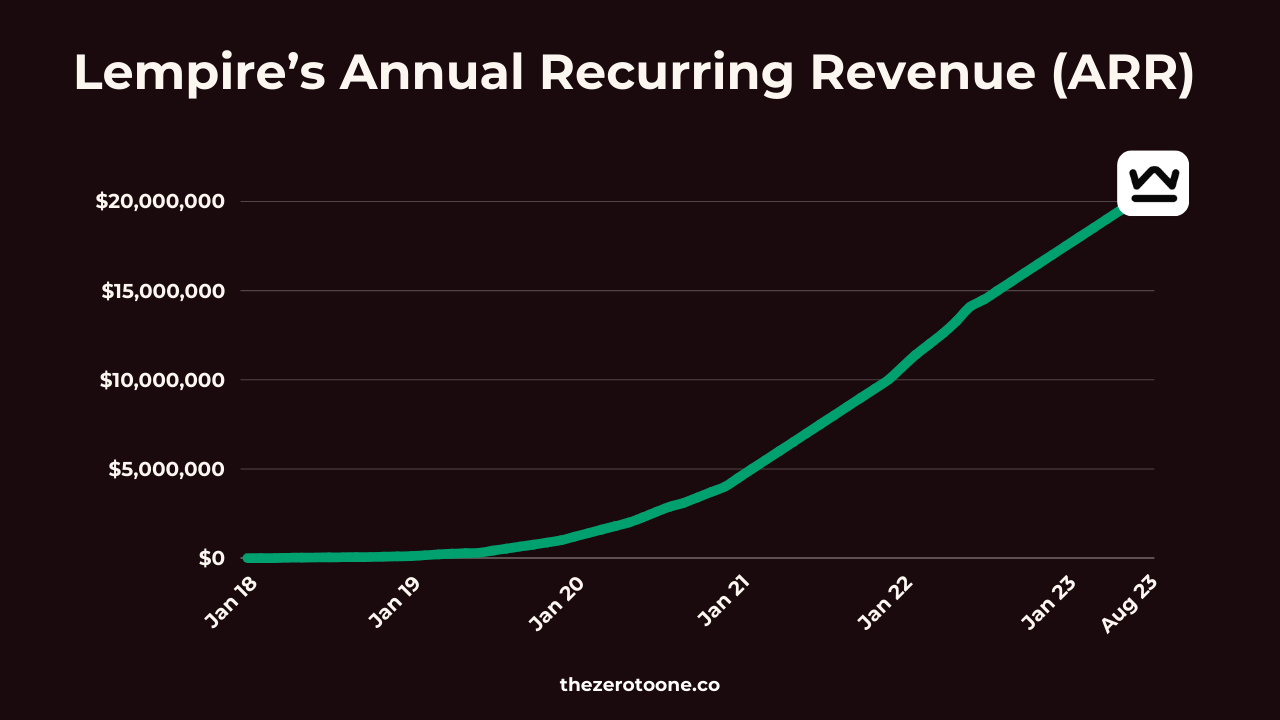
In just five years, Lempire went from launch to $20M ARR. Absolutely incredible growth.
With Lempire’s ~$95 ARPA (Average Revenue Per Account), it means that they have ~17,550 paying customers.
But this growth was not without hiccups.
At the end of 2021, they cashed-out 20% of the business for $30M. A $150M valuation.
But then chaos struck.
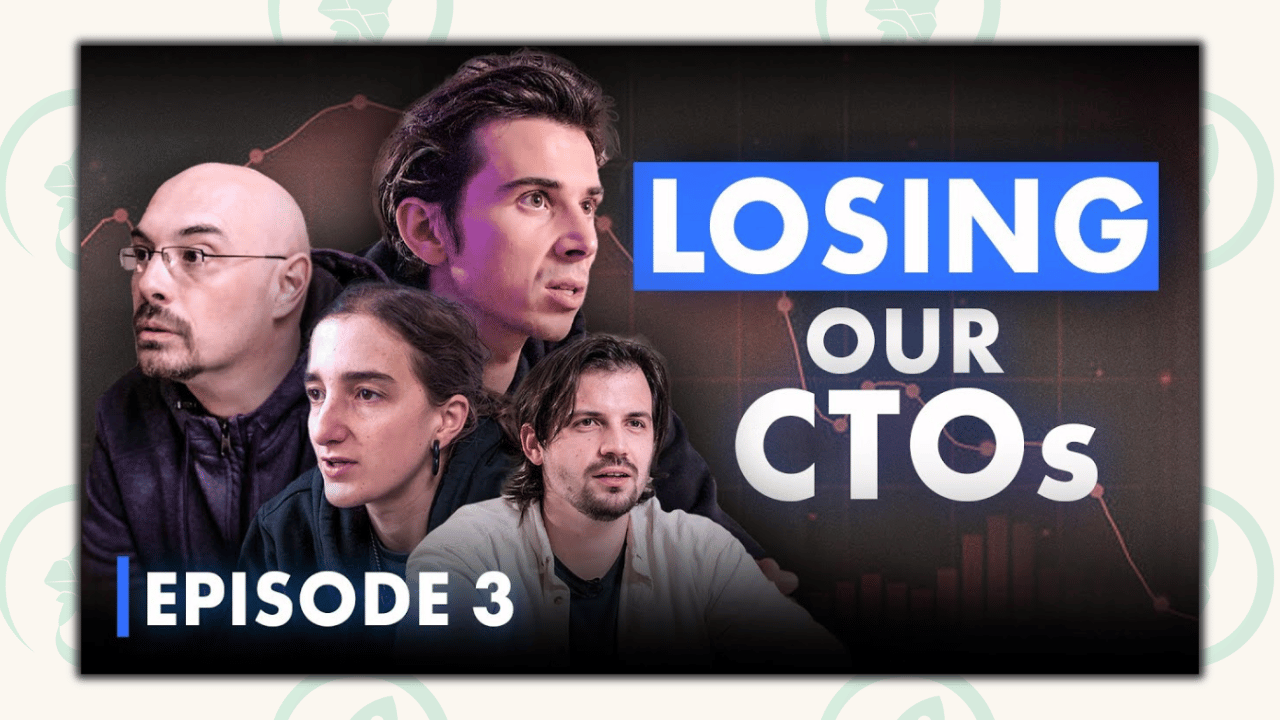
Vianney and Francois decided to leave the business.
Two months later. The Head of Growth and Head of Sales also left.
Growth slowed.
G realized he needed to lean on his team.
So he created a culture of ownership and development, hiring an executive coach and investing heavily into training and courses for the whole team.
This allowed the team to thrive. With many stepping into leadership roles and driving Lempire from $10M → $20M ARR.
Key Success Factors (KSFs)
There have been plenty of reasons for Lempire’s success. But what stood out most to me, is that they focused heavily on the basics, and just did them extremely well! Here are three that really stood out to me:
❤️🔥 1. Dedication to customer success: G and the team are devoted to ensuring their customers are successful. Shaping their products to solve their customers’ pain points and providing an endless supply of content and actionable lessons for their customers to replicate.
💰 2. Focus on profitability: Being bootstrapped, there’s one focus point: PROFITABILITY. Instead of raising money to fuel growth, Lempire has intentionally tried to do more with less to keep profitability high.
📢 3. Leveraging personal brands on LinkedIn: G and multiple members of the team have built personal brands on LinkedIn - reaching over 20M monthly impressions - building trust and boosting sales.
❤️🔥 1. Dedication to customer success:
At its core, a business is as successful as it can make its customers. In Lempire’s case, success for its customers means making money.
So G and the team make sure their customers make money.

This starts with building an awesome product that customers love. And that’s what Lemlist and the other products are.
But they weren’t awesome from the beginning. Yes they were good. They were different and cool, and did solve problems and boost sales.
But what took the products from good to great, was the team consistently speaking to their customer and getting feedback.
Constantly speaking with their customers meant that the team was on top of all the latest challenges their customers were facing. And they were able to try fix them.
For example, Lemwarm came from a discussion some of their customers were having about warming up their emails to avoid spam filters.
A discussion that was had on Lempire’s Sales Automation / Email Outreach Facebook community. The largest sales prospecting community on Facebook by the way.
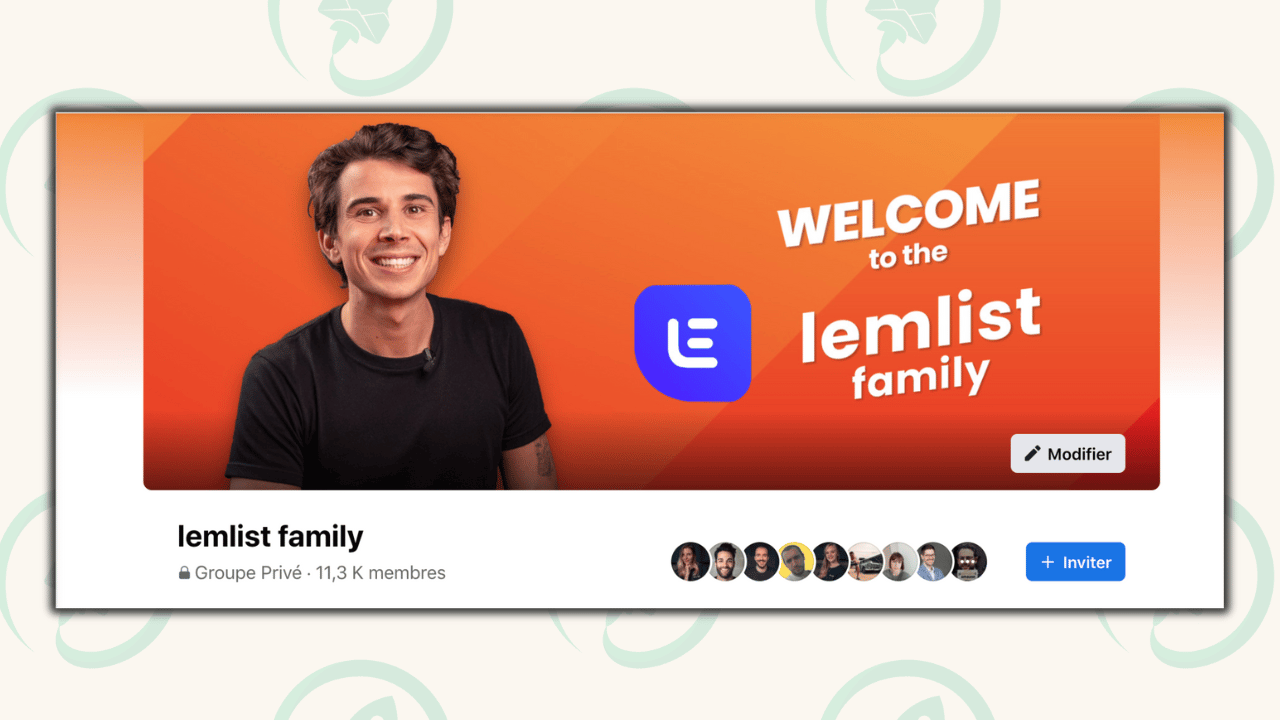
Lempire solved this problem in a week and shipped it to customers. It's now a core feature of their product, and at the time was completely revolutionary to the market.
But Lempire don’t speak to their customers just to improve their products.
They do it because they genuinely care about the success of their users. And their mission to help 1,000,000 entrepreneurs launch profitable businesses:
Offering free prospecting consulting to users. 🆓
Producing the best content (videos, LinkedIn posts, blogs, newsletter articles) to help users grow themselves and their businesses. 📹
Hosting webinars with leading sales professionals. 💻
Created a masterclass with actionable insights curated from all their webinars and content. 🥷
By doing this, they have not only made their customers more successful. But they have also built extreme trust.
They said they wanted to help. And they proved it.
Lempire use what they call the Growth Circle of Love as a funnel to focus on growth and customer success.
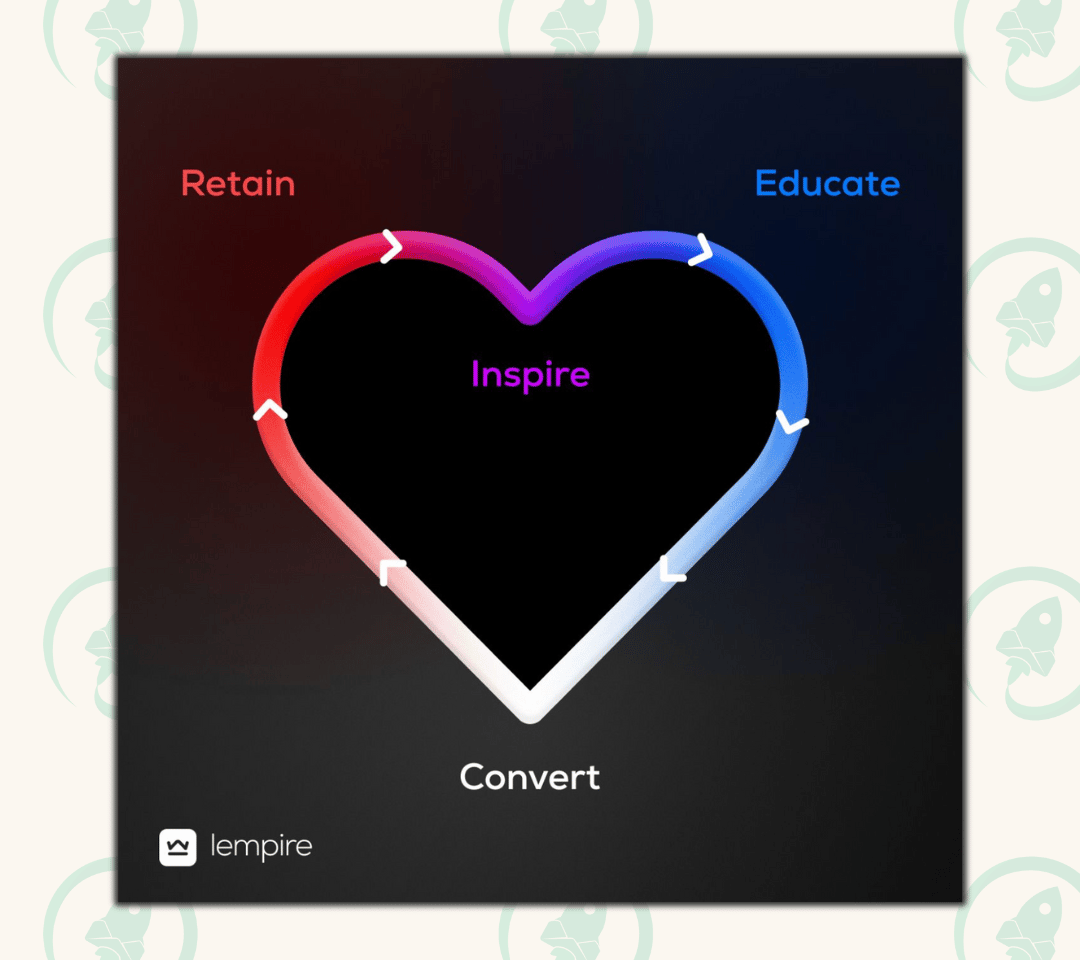
Inspire. Create inspiring content. Spark that flame within your potential customers.
Educate. Take people who are inspired and don’t know how to start and teach them. Give them content with actionable tips.
Convert. Turn their content consumers into customers using the trust they have built and showing how awesome their product is.
Retain. Focus on helping their users be as successful as possible.
This simple model shows just how driven Lempire is to helping its customers succeed at every stage of their journey to Lempire - even before they become customers!
💰 2. Focus on profitability
G and his Co-Founders tried to raise money. But they were rejected from dozens of VCs. Including from one particularly friendly VC:
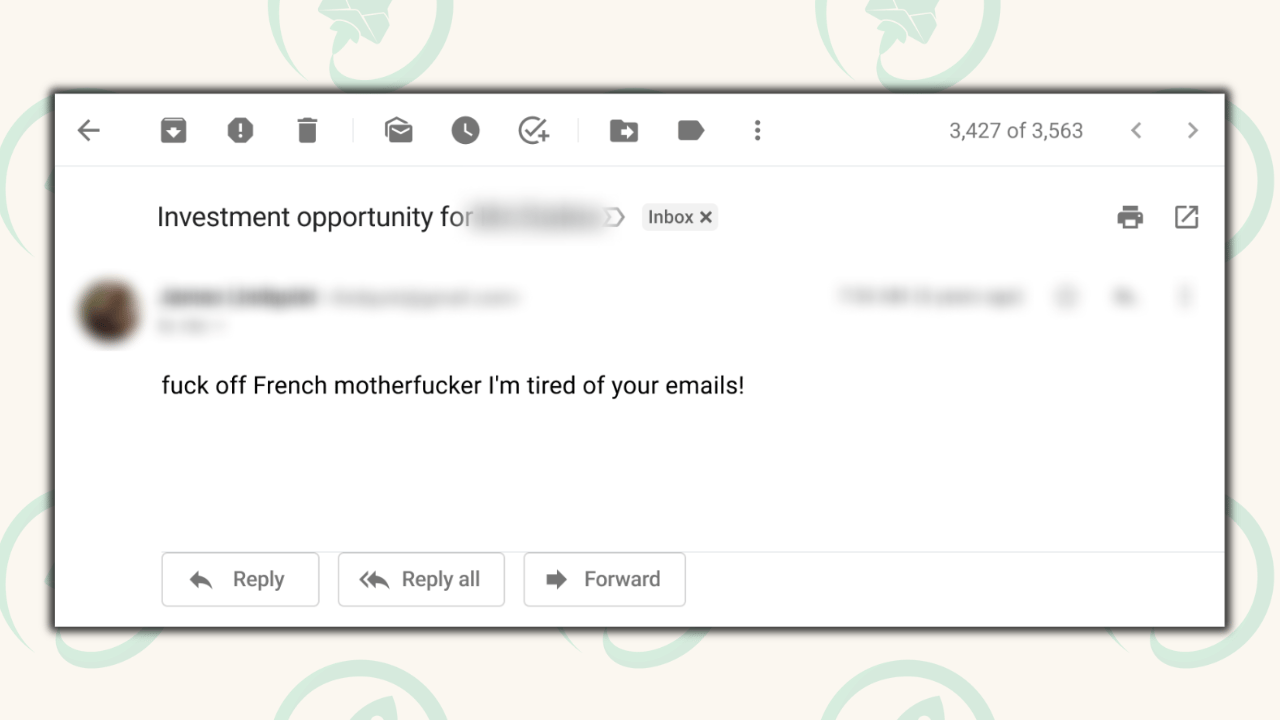
So they decided instead that the three of them would bootstrap it with $1,000.
This meant that above anything else. They needed to reach profitability.
That meant they needed to do a few things.
Validate the idea as soon as possible 👨🔬
Reid Hoffman (Founder of LinkedIn) once said that if you aren’t embarrassed by your first launch - you’ve launched too late.
And G admits that they didn’t launch too late.
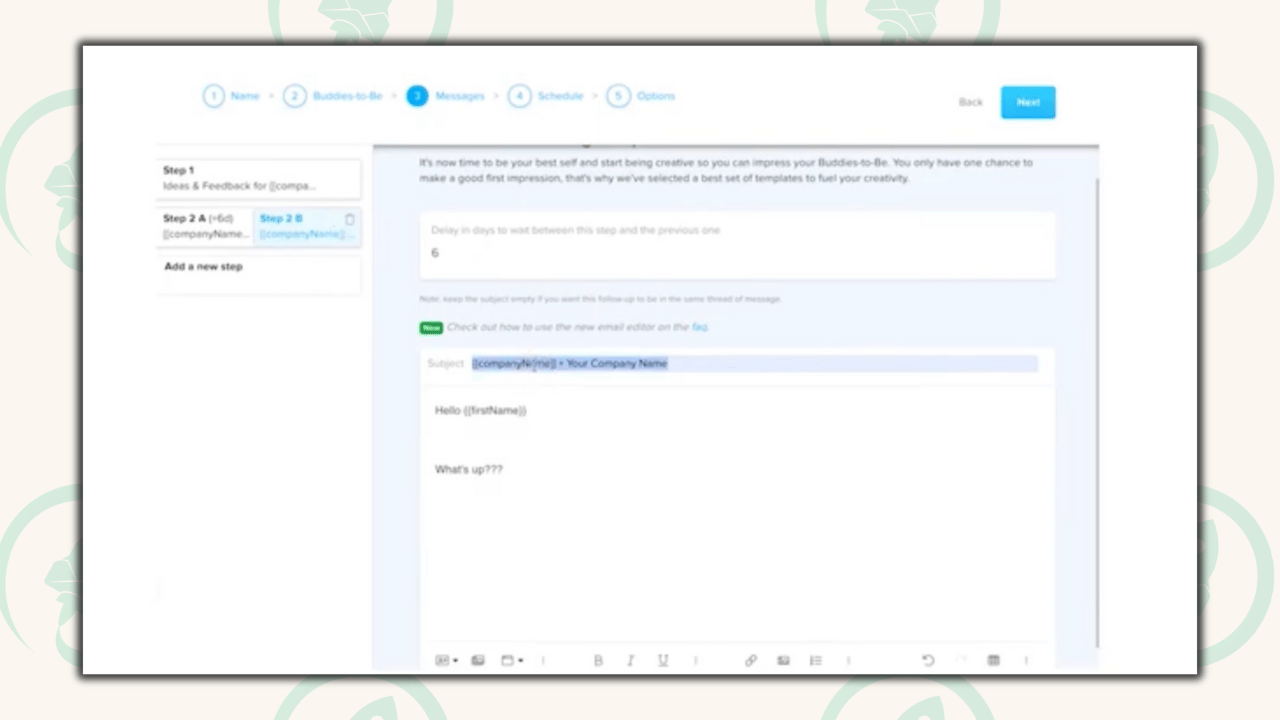
Although not perfect - they had a product. Lemlist. The first email outreach tool to create personalized images for you.

Then they launched on Product Hunt.
This brought in hundreds of users. They had now validated their idea.
Develop a Most Valuable Skillet (MVS) ⛷️
With both of G’s Co-Founders being technical, almost everything else fell into his lap.
He needed to learn what he calls his MVS, i.e., everything you need to run a business - marketing and sales to name the most important two - before you can confidently hire people to fill those roles.
Do you know exactly what responsibilities you need filled? And what skills it takes to fill them?
Developing an MVS will help you answer those questions.
Stay lean 👻
Lempire needed to do more, with less. Maximizing every resource they had.
This meant them eating their own dog food, i.e., using their own product. Being free to them, they could save on costs.
So G used Lemlist to prospect potential customers, building confidence in the product, documenting success stories with and guides for it, and building trust amongst potential customers.
Lempire have kept this lean attitude with hiring. Choosing to hire only when it hurts not to. Strengthening their culture of doing less with more.
They believe that one awesome team member is better and more productive than 10 averages ones. Never compromising on hiring.
This has led to them building an incredible team, who are all driving the mission of enabling 1,000,000 profitable entrepreneurs.

Lempire have never spent any money on paid advertising. Instead leveraging community.
As mentioned earlier, Lempire created a Facebook community for cold emailing and sales prospecting, where they give actionable tips and insights.
G also joined dozens of other communities related to Lempire - where we started to get noticed and people started to trust him. Meaning more sales form Lempire.
All of this was free.
But arguably their most effective growth tool has been LinkedIn.
📢 3. Leveraging personal brands on LinkedIn
G realized early on that LinkedIn was the perfect place to reach his customers.
It’s where salespeople and entrepreneurs hang out.
He also understood that in today’s world, how you build trust and credibility is through a personal brand.
And so he set out to build one.
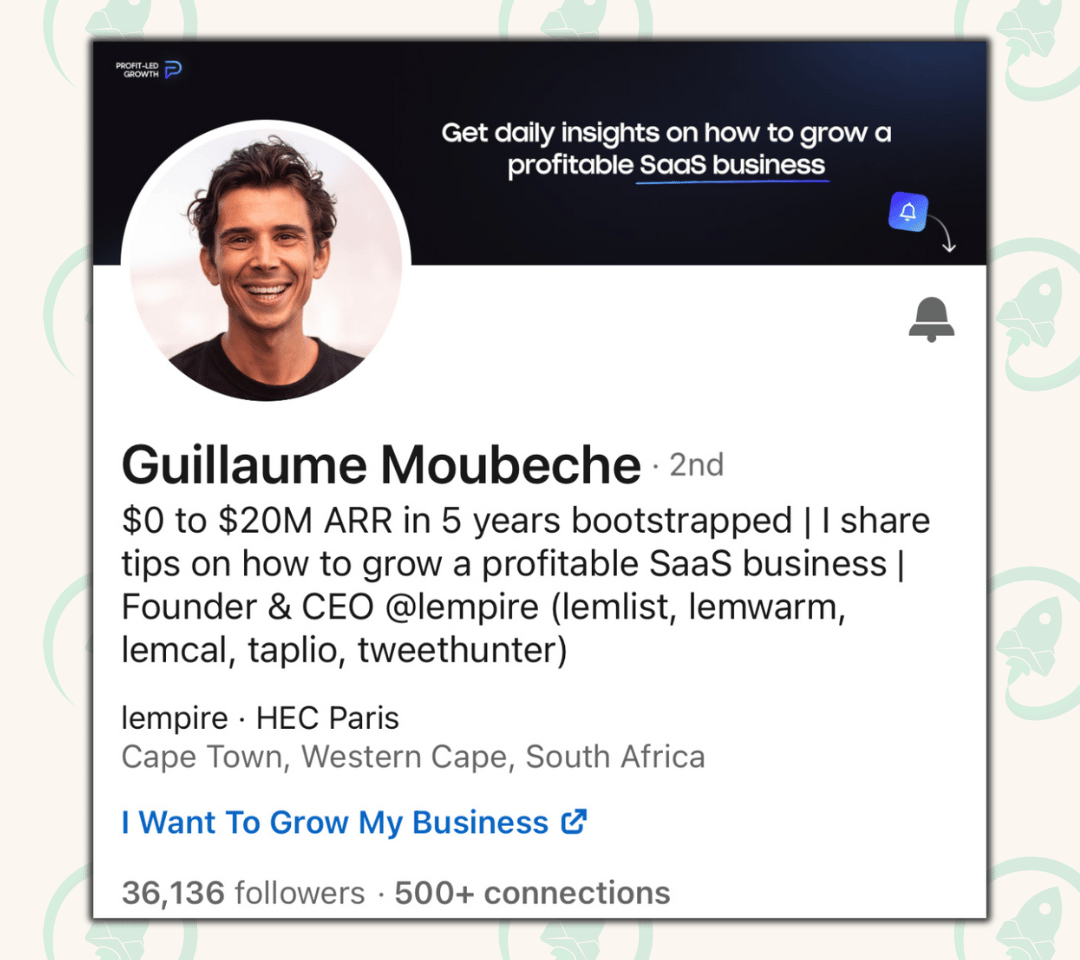
G built his audience by using his experience running a startup and his past experience from his lead generation agency to write helpful and actionable tips for founders and on how to prospect and generate leads.
He then started sharing his results with Lemlist and how to replicate them.
Essentially he focused on giving away a ton of value for free. And that really is the core of growing a personal brand. Give, give, and give some more.
But he didn’t stop there.
G created an internal course for everyone at Lemlist. So that the whole team could use it to grow their brands and increase Lempire’s revenue.
Team members started growing on LinkedIn. Connecting with potential customers in a much more personal way.
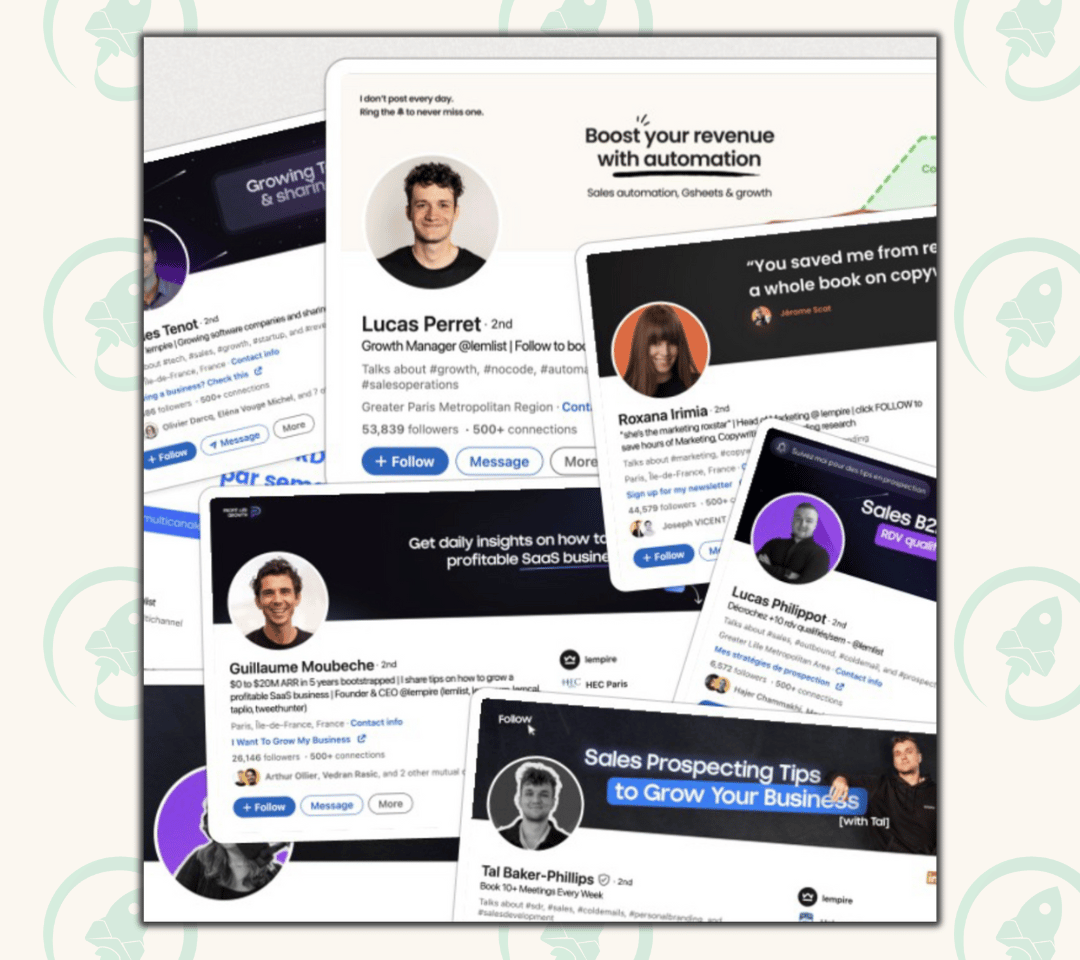
Now, combined, they reach more than 20M people per month of LinkedIn - all for FREE!
Besides just the huge reach. Many of the team have also been invited to speak on podcasts, webinars, and live events. Building their (and Lempire’s) brand even more.
Actions you can take to replicate Lempire’s success
There is so much to love about how G and the Lempire team have built the business. Ultimately, their product is just really awesome. And I say this from personal experience.
I used Lemlist when I was still running my Real Estate Media business. The results were incredible.
They made what was intimidating for me, I dreaded sales, and made it enjoyable. They delivered on their promise.
In saying this, here are my favourite ways you can replicate their success:
Eat your own dog food 🐶
I don’t mean literally like Shaggy ate Scooby Snacks.
I mean you need to use your own product.
Right from day one, G used Lemlist to prospect potential customers. It paid off massively:
It was free, meaning he could reduce their expenses. 🧾
He could test the product. Finding bugs and potential features to add. 🐞
It was a great sales pitch. The goal of using Lemlist is to prospect and get people on calls. And what better way to prove that it worked, by actually using it to get potential customers on calls with him. There is no objection possible to that. 👩💼
It built trust with users. If the CEO believes in his product, I should too. 🤴
He could empathize with users. You feel the same pain points they do. And you experience the same joy with the product as they do. 💆♂️
One thing it also helps you to do is create value-adding content around you using your tool:
How you use it (practically) - guides.
How you solved pain points with your product - use cases.
How you use it successfully - actionable tips for better results.

All of these build trust and help your users succeed. Which leads to them staying a customer for longer. Meaning less churn and more revenue.
Talk to your customers constantly 👨❤️👨
One thing the team at Lempire does extremely well is talking to their customers.
They even built a whole community around this.
Constantly engaging with customers - from every level of the company, CEO included - has built massive trust between Lempire and its customers. Boosting users’ loyalty, reducing churn, and increasing revenue and profit.
But consistently talking to your customers also adds so much more to your business:
Pain points in your product. Find out where users are not so-happy with your product and how you can improve its usability and effectiveness. 🥲
Additional areas to help your users. Identify where else your customers are experiencing difficulties and solve them. For Lemlist, this meant helping people close deals. So Lemlist used this information to create actionable content (videos, newsletter, masterclasses) to help their customers. 📝
Potential new features to add. Spot opportunities for other features you can add to your product to make it even better. E.g., integrations, automations, or adding new tools. 🛠️
Market better to future customers. Understand how your customers think. What language they use. What their key concerns are. What they need the most help with. All of this you can use when marketing and prospecting new customers. 👩💻
Double down on what works. See what your users love about your product (it could be a feature you thought was just an add-on). And then double down on this feature and the type of customer that will love it.
Constantly test new ideas 🧪
Building a business is hard.
Often you’re creating something brand new out of nothing.
That’s no easy feat.
There’s also luck involved. No one has a crystal ball which is 100% accurate.
But the thing about luck is that there’s two types:
Passive luck
What most people think of when they think of luck.
It’s your blind luck. And you have no control over it.
For example, what country you’re born in - you have ZERO control over this.
But it’s actually very hard to think of other examples you can’t influence.
Winning the lotto - just buy more tickets. Finding money on the floor - walk in richer, more cash-heavy neighborhoods.
This leads me to the second type of luck.
Generated luck
Luck you can increase your chances of receiving.
And is actually how we should start viewing luck. Something we can influence.
Take the above examples. Most people would consider those events blind luck.
But they’re not.
Now I’m not saying there’s no chance involved. But rather, you can increase your chances of luck.
Let’s use football (soccer) as an analogy. Essentially every shot has an element of chance. Some things you can’t control in the moment: the keeper, the wind, the ball’s pressure. But take a shot again. And again. And again. Now your odds of having scored are dramatically higher.
So although you can’t eliminate chance. You can increase your shots on goal.
And that’s what Lempire does.
Constantly testing new products. New marketing channels. And new ways to help their customers. But they don’t always work. Not everything they try is successful.
I found plenty of dead links and ideas that didn’t work out for them during my research.
But overtime, they’ve managed to generate their own luck in finding successes. Not because they were blindly lucky. But because they constantly put themselves in positions to be lucky.
There’s a great quote from a fellow South African, and one of the greatest golfers of all time, Gary Player.

“The more I practice. The luckier I get.”
Have fun 🛼
One of the most important lessons I’ve learnt from G in this week of research, is to remember why I’m building a business in the first place.
Yes there’s a strong mission of mine to help people turn their ideas into businesses.
But I’m also doing this because I enjoy it.
I love reading about startups. I love understanding what drives a successful business. I love looking at the nuances between different paths and different companies. It gives me joy.
But it’s often easy to forget that.
So often when building a business you get caught in the motions. You’re just operating.
You do the things you’re supposed to do as an entrepreneur. And not necessarily the things you want to do.
But G has flipped the script with Lempire.
Focus on one product they said. Well Lempire successfully built out multiple.
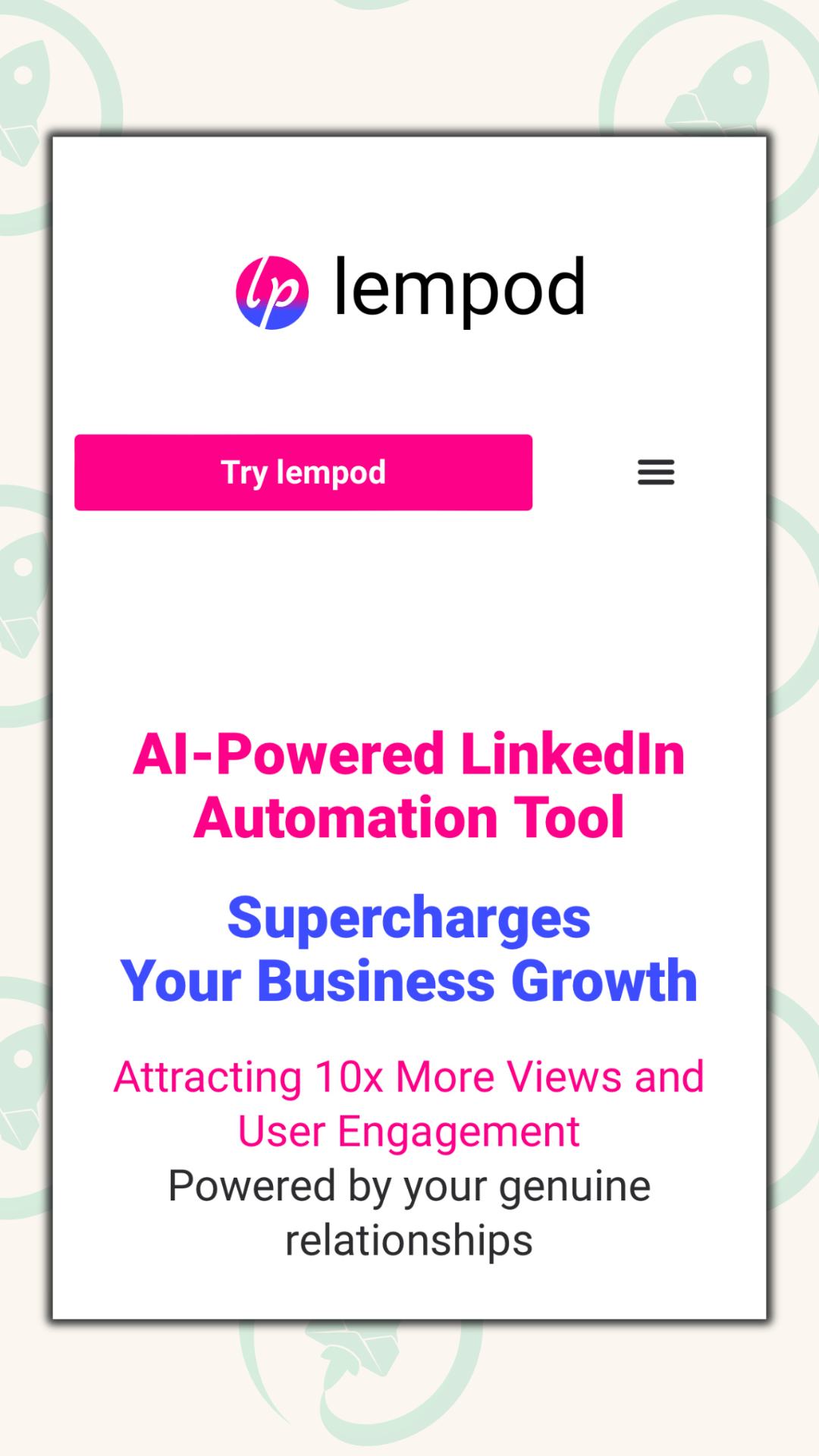
Why? Because they love building new products. It gives them energy.
Energy they can put into the business. To create better products. To think more creatively. To truly connect with their users.
Now I’m not saying don’t take advice. There are best practices for a reason.
But don’t forget that to build a business it takes a lot of physical and mental energy.
So make sure to have fun while building. 😎
For The Zero to One, it’s been your host, Sheldon.
Speak soon and stay awesome!


